As Aristotle once said, “the whole is greater than the sum of its parts.” The same is true for cannabis. For many years, experts believed that it was cannabinoids and cannabinoids alone that caused the unique uplifting or sedative effects of weed, but these days, we’re a little wiser. Terpenes, the aromatic compounds found in cannabis, are now at the forefront of the cannabis discussion, mainly because evidence suggests that they, too, affect how cannabis feels. In fact, terpenes may very well be what causes certain familiar effects from weed, even more so than the cannabinoids themselves.
From enhancing flavours to influencing your overall experience, terpenes are just one part of cannabis that helps make for an all-encompassing, whole-plant experience. In this comprehensive guide, we’re breaking down everything you need to know about terpenes, diving deep into their role within cannabis and beyond. We’ll define terpenes in simple terms, highlight their presence not only in cannabis but also in other plants, and uncover their unique relationship with cannabinoids like THC and CBD.
Table of Contents
What Are Terpenes?
Terpenes, at their core, are scent and flavour compounds. They’re found in every plant on earth and even in some insects. In nature, their role is to attract pollinators, spread their seeds, or to repel pests. There are more than 20,000 unique terpenes in the plant kingdom, and cannabis alone contains well over 200 of them. Picture the rich, earthy notes of one strain, the zesty citrus hints of another, or the sweet, floral undertones of yet another – these are all thanks to the presence of specific terpene ratios.
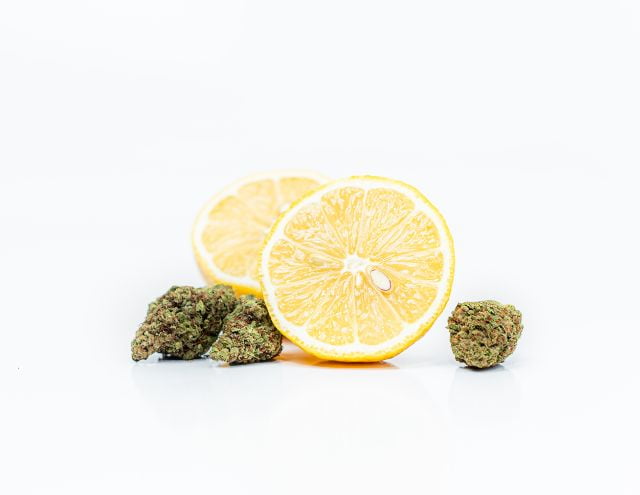
These 200+ terpenes within the different strains of cannabis from every corner of the globe play an important role in weed. Sure, they affect how a strain smells or tastes, but evidence also suggests that they work closely with cannabinoids to promote specific effects. Some terpenes promote more energetic effects, while others may be more relaxing. But as we take a closer look into the world of terpenes in the following sections, you’ll gain a clearer understanding of their significance in shaping your experience.
What Do Cannabis Terpenes Do?
Terpenes mainly influence flavour and aroma. They are like the seasoning in your cannabis experience, adding depth and character to the effects you feel. These little molecules work closely with other compounds in your weed to promote unique effects. For example, cannabinoids like THC will make you feel high. But what kind of high you feel depends on the terpenes present in the strain. Uplifting terpenes may make your high feel more energetic and cerebral, while relaxing terpenes may make the high feel more stony and physical.
Some terpenes offer effects similar to cannabinoids, but one key thing to remember is that both compounds are uniquely different. While cannabinoids like THC and CBD hog the spotlight for their well-known effects, terpenes play a distinct role. Both have their own set of effects, though terpenes may have synergy with other compounds, affecting your perceptions and how you feel when you enjoy cannabinoids like THC or CBD.
How Do Terpenes Compare to THC and CBD?
Terpenes, as we’ve learned, are the aromatic architects of the cannabis world. They give each strain its unique scent and flavour profile, making your smoke sesh a sensory delight. But their role doesn’t stop there. Terpenes can also have various potential properties, such as anti-inflammatory, stress-reducing, focusing, energising, and other effects when you enjoy them.
You’ll find terpenes in all sorts of products, including aromatherapy infusions, soaps, cleaning agents, and even foods and beverages. Lavender candles, for example, may make you feel less stressed and more relaxed. Linalool, the primary terpene in lavender, causes these effects. On the other hand, pine-scented candles are often used for focus since the primary terpene in pine needles, pinene, is known for boosting mood and memory.

However, it’s important to note that terpenes, by themselves, won’t induce the traditional “high” associated with cannabis. That comes from the cannabinoids themselves. Cannabinoids like THC and CBD are the primary compounds responsible for the more familiar psychoactive and therapeutic effects of cannabis. THC, or tetrahydrocannabinol, is notorious for its euphoric high, while CBD, or cannabidiol, is renowned for its non-intoxicating therapeutic potential.
Understanding this distinction is essential. While terpenes enhance aroma, flavour, and potential properties, cannabinoids like THC and CBD have unique effects. However, the real magic happens when terpenes and cannabinoids combine to create the entourage effect.
The Entourage Effect Between Cannabinoids and Terpenes
The entourage effect is a fascinating synergy that occurs when terpenes and cannabinoids work together within a cannabis strain. The entourage effect highlights how all of the compounds in cannabis work together to boost the effects of a specific compound. There is an entourage effect between cannabinoids and terpenes, which is why weed that smells and tastes good will often make you feel higher than a THC-rich strain with a lack of flavour.
While THC is the primary cannabinoid responsible for the traditional “high,” it’s the terpenes that help steer this high in different directions, creating distinct effects commonly associated with indica and sativa strains. Indica strains are often associated with a relaxed, soothing physical feeling, while sativa strains tend to produce more energising and cerebral effects. What’s interesting is that it’s not just the THC content that determines these effects. The strain’s terpene profile plays a significant role in shaping how you feel.
Think of terpenes as the steering wheels that guide your experience. For example, myrcene, a terpene commonly found in indica strains, is known for its calming and sedative properties. On the other hand, limonene, often found in sativa strains, has an uplifting and energising effect. These terpenes, among others, help set the tone for the high you’ll experience. While the terps alone won’t get you high, the relationship they share with cannabinoids affects your experience.
So, while THC may be the engine that gets you high, it’s the terpenes that determine whether you’re cruising down a relaxing indica path or flying on an invigorating sativa adventure. The interplay between these compounds is what makes each strain’s effects unique and tailored to your preferences.
Do Terpenes get you High?
Terpenes do indeed possess psychoactive potential, but it’s essential to differentiate between the type of psychoactivity they offer and the traditional “high” associated with THC. They can enhance or modulate the effects of cannabinoids, but they don’t produce a high on their own. Instead, their psychoactive potential lies in their ability to shape the subtler aspects of your experience, such as mood, relaxation, or alertness.
Certain terps, such as linalool or myrcene, can influence your mood and perception when you encounter them. For example, linalool, found in lavender, is known for its calming and relaxing effects. This is why it’s a common component of aromatherapy scents meant to reduce stress and anxiety.
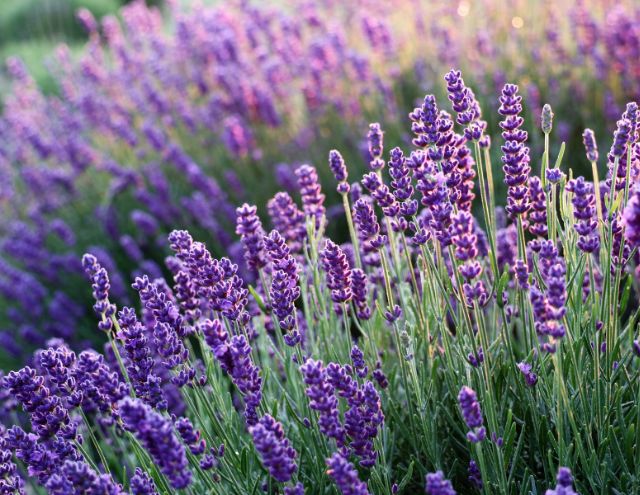
That said, terpenes are somewhat psychoactive, but they’re not intoxicating and won’t make you high like THC would. When you encounter terpenes, you won’t experience the euphoria, altered perception, or impaired cognitive function like you would with THC, but you might catch yourself feeling a bit more energised, refreshed, or relaxed.
So, while terpenes won’t get you high in the traditional sense, they do have a significant impact on how you feel and can contribute to the complexity and depth of your high when combined with cannabinoids, thanks to the entourage effect.
Do Terpenes Make Cannabis Feel Stronger?
Terpenes are, indeed, potent players in how your high feels, but they don’t make cannabis feel stronger in terms of increasing THC potency. Instead, they work their magic by influencing how you perceive and interact with the effects of cannabinoids like THC and CBD.
Terpenes have the remarkable ability to modulate or fine-tune the effects of cannabinoids. For instance, myrcene, the terpene known for its sedative properties, can make the relaxation induced by THC feel more pronounced, giving the impression of a “stronger” physical high. Conversely, limonene, with its uplifting qualities, can make the cerebral effects of THC feel more pronounced, creating the sensation of a “stronger” mental high.
The key to a satisfying cannabis experience often lies in finding the right balance of terpenes and cannabinoids. This is where strain selection becomes crucial. By choosing strains with terpene profiles that align with your desired effects, you can create a customised experience that feels stronger in the aspects that matter most to you.
So, while terpenes themselves don’t increase THC potency, their ability to shape and enhance the effects of cannabinoids allows you to tailor your smoke sesh to your preferences, making it feel more potent in the ways that resonate with you.
Are Terpenes Used Outside of Cannabis Strains?
As we mentioned, terpenes are not exclusive to cannabis; they exist throughout nature and offer a wide range of applications. These versatile compounds serve various purposes in both the natural world and human applications. In nature, they help protect the plants from pests or diseases or attract pollinators or other animals to help them spread their seeds. We also use them in foods, beverages, cosmetics, aromatherapy infusions, and more.
In the realm of cannabis, terps play a significant role in concentrates, edibles, and topicals. Concentrates like oils and waxes often feature specific terpene blends to enhance flavour and sway effects. For example, distillate oils are refined to remove natural terpenes for purity, and many processors will reintroduce a terpene blend to make them feel more like an indica, sativa, or hybrid.
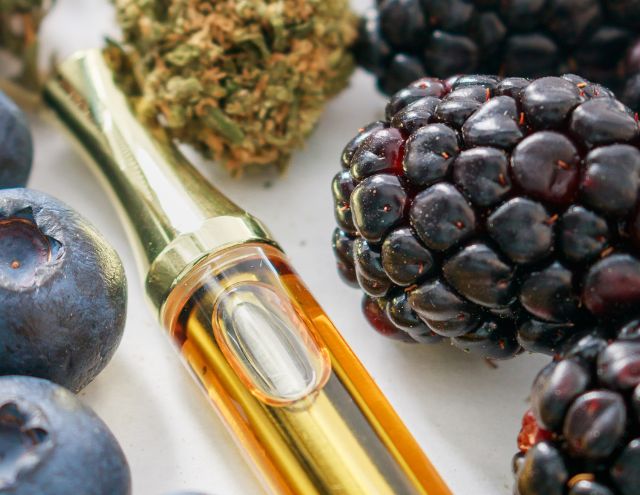
All plants contain terpenes, so you may even find a few of them reintroduced into edibles made with fruit purees or chocolates, which boosts the flavour and amplifies the effects. Topicals also contain terps from other plants. For example, CBD topicals may also contain capsaicin or menthol to help produce a warming or cooling effect that helps with muscle relaxation.
The Role of Terpenes in Foods, Topicals, Beverages, etc.
Even outside of cannabis applications, terpenes are widely used in many everyday products. The use of terpenes in these diverse applications underscores their importance and demonstrates their ability to enhance the benefits of both cannabis and everyday products. More or less, terpenes are incredibly versatile and offer potent effects both within cannabis and in other plants and products.
- Flavouring Agent: Terpenes are used as natural flavouring agents in foods and beverages, providing delightful tastes and aromas. Terpenes offer an all-natural way to infuse delicious flavours from citrusy limonene to earthy myrcene. These flavours can be infused using natural ingredients, like fruits or vegetables, or refined and used in artificial flavourings for things like vape juice, blue candy, etc.
- Scent Improving Agent: Terpenes are used as scent enhancers in perfumes, cosmetics, and household cleaning products. Some of them are even used in insect repellants or other animal repellents. They can also be used in aromatherapy infusions and essential oils designed specifically to promote calming, energising, or relaxing effects.
- Functional Ingredients: Thanks to their role in nature, most terps are naturally anti-inflammatory or antibacterial. For this reason, they often find their way into cleaning agents, cosmetics, vitamins and supplements, and skincare products.
- Commercial Products: Because terpenes play a role as functional ingredients and scent or flavour enhancers, they can be found in most commercial industries, including food and beverage, cosmetics, cleaning agents, and more. Many commercial products contain terpenes, such as vape flavourings, insect repellents, and even fish bait. Their versatility makes them valuable in industries where scent and flavour are paramount.
A Few Common Cannabis Terpenes
While there are over 200 terpenes found in cannabis, let’s take a look at the big three that are typically found in the highest quantities in cannabis: myrcene, b-caryophyllene, and limonene. These terpenes not only shape the aroma and flavour of cannabis but also contribute to the high you’ll experience.
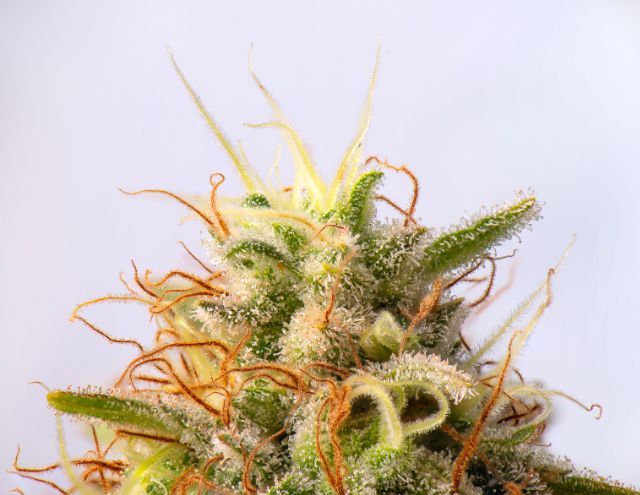
1. Myrcene
Myrcene is one of the most prevalent terpenes in the cannabis world. It’s responsible for that earthy, musky aroma you might associate with certain strains. Beyond its distinctive scent, myrcene is renowned for its relaxing and soothing properties, making it a frequent presence in indica strains. When you encounter myrcene in your cannabis, you’re likely to feel a deep sense of relaxation and tranquillity. It’s the terpene that often helps you unwind after a long day and find relief from stress and tension. Further, evidence suggests that myrcene may be the terpene responsible for causing the munchies. You can find myrcene in mangoes, lemongrass, basil, and hops— or in strains like Blue Dream, Granddaddy Purple, and Northern Lights.
2. Limonene
Limonene is another common terpene found in cannabis and is known for its refreshing, citrusy aroma. This terpene brings a burst of brightness and energy to strains that contain it. If you’ve ever enjoyed a cannabis strain with a lemony scent, you might have experienced limonene’s uplifting effects. It’s often associated with increased alertness, improved mood, and a sense of euphoria. Limonene demonstrates how terpenes can provide a refreshing and mentally stimulating experience, making it a favourite among those seeking a more vibrant and cerebral high. You can find limonene in lemon zest, rosemary, other citrus, and cannabis strains like Sundae Driver, Hindu Kush, and Flo.
3. β-Caryophyllene (Caryophyllene)
B-caryophyllene is a fascinating terpene because it interacts with the body’s endocannabinoid system, which makes it unique among terpenes. This interaction potentially provides anti-inflammatory and pain-relieving effects, offering therapeutic benefits beyond aroma and flavour. When you come across b-caryophyllene in cannabis, you might notice its spicy, peppery aroma, often accompanied by hints of wood and cloves. As one of the top terpenes in cannabis, it’s beloved for its relaxing effects. While it can also be found in cloves, black pepper, and star anise, you’ll find it in strains like Sour Diesel, Girl Scout Cookies, and Gorilla Glue #4.
While these three terpenes are some of the most common in cannabis, it’s essential to keep in mind that there are many more terpenes out there, and they vary from strain to strain. Each one offers unique effects, which you can take a look at to determine which strains will feel the best to you. Other terpenes to be on the lookout for include:
- Terpinolene
- Linalool
- Humulene
- Ocimene
- Pinene
- Terpineol
- And more!
Protecting Your Terpenes
Terpenes are very delicate compounds that can quickly degrade or evaporate away, and their potency can diminish when exposed to adverse conditions. Like cannabinoids, terpenes are sensitive and vulnerable to degradation when exposed to some aspects like light, air, and heat. When terpenes break down or evaporate out of your weed entirely, it not only affects the aroma and flavour of your cannabis but also diminishes its potential effects.
Since there’s a massive connection between cannabinoids and terpenes and the entourage effect they share, it’s vital to preserve them if you want to get the best possible effects out of your weed. Terpenes aren’t just about enhancing aroma and flavour; they play a vital role in influencing the depth and complexity of your cannabis experience. Losing terpenes to degradation can result in a less enjoyable and less effective smoke.
Proper storage is the key to preserving the terpene potency in your cannabis products. Protecting your terps should be a priority whether you have flower buds, concentrates, edibles, or topicals.
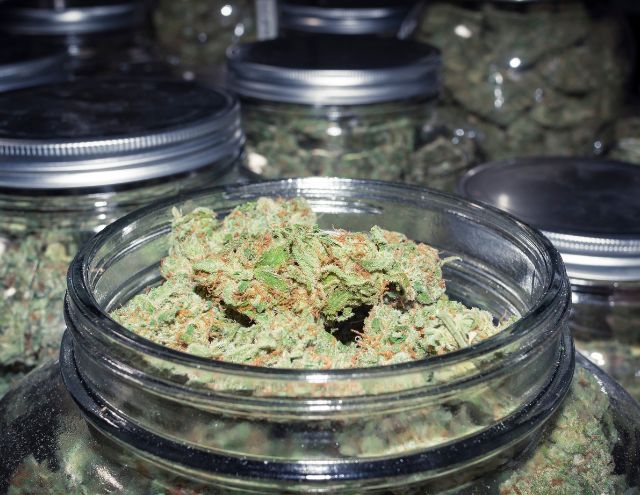
Pro Tips for Preserving Terpenes
Luckily, preserving terpenes is pretty easy with a little know-how. Terpenes are especially sensitive to evaporation via exposure to oxygen and heat. Whether you’re storing flower buds, concentrates, or infused products, these guidelines will help you make the most of your terpene-rich cannabis.
- Store in Airtight Containers: To protect your cannabis products from exposure to air, use airtight containers. Mason jars or specialised containers with seals work well. This prevents terpenes from evaporating and helps maintain their potency.
- Keep it Dark: Store your cannabis in a cool, dark place, away from direct sunlight. Light can degrade terpenes over time. A pantry, drawer or stash box is an ideal location for maintaining terpene integrity.
- Control Temperature and Humidity: Keep your cannabis at the right temperature and humidity levels. The ideal range is around 15-20°C (60-68°F) and 55-62% relative humidity. Extreme temperature fluctuations can cause terpene loss.
- Use Humidity Control Packs: Consider using two-way humidity control packs to maintain optimal humidity levels in your storage containers. These packs help preserve terpenes and prevent your cannabis from drying out.
- Avoid Overhandling: Limit excessive handling of your cannabis, as the natural oils on your fingers can transfer to the product and affect its terpene profile. Use tongs, gloves, or specialised tools when necessary.
- Low-Temperature Dabbing: If you enjoy concentrates, opt for low-temperature dabbing. High-temperature dabbing can scorch terpenes and diminish their flavour and effects. Use an e-nail or a terpene thermometer to ensure a more terpene-rich experience.
- Monitor Freshness: Pay attention to the freshness of your cannabis. Older products tend to have degraded terpenes. Regularly check for any changes in aroma and flavour to ensure you’re experiencing the full terpene potential.
- Seal Edibles and Topicals: For cannabis-infused edibles and topicals, make sure to seal them tightly after each use. This prevents terpenes from escaping and maintains their effectiveness.
Conclusion
At the end of the day, terpenes are the aromatic architects shaping the sensory experience. While terpenes and cannabinoids may seem ordinary on their own, their synergy creates something extraordinary. These compounds, when united, offer a symphony of scents, flavours, and effects that transcend their individual qualities. Terpenes enhance aroma and flavour and contribute to mood, relaxation, and therapeutic potential.

To bring it full circle, when it comes to weed, Aristotle was right. Cannabinoids and terpenes on their own really aren’t all that special, but that unique synergy cannabis as a whole shares by blending both makes for a remarkable experience that you can custom fit to your liking.
Combining cannabinoids and terpenes makes for a better experience, which is why it’s so important to preserve your terps if you want to experience a unique blend of effects.
As you explore the diverse terpene profiles in your favourite cannabis strains, remember that the whole is indeed greater than the sum of its parts. Terpenes unlock a richer, more nuanced cannabis experience that caters to your preferences and needs.


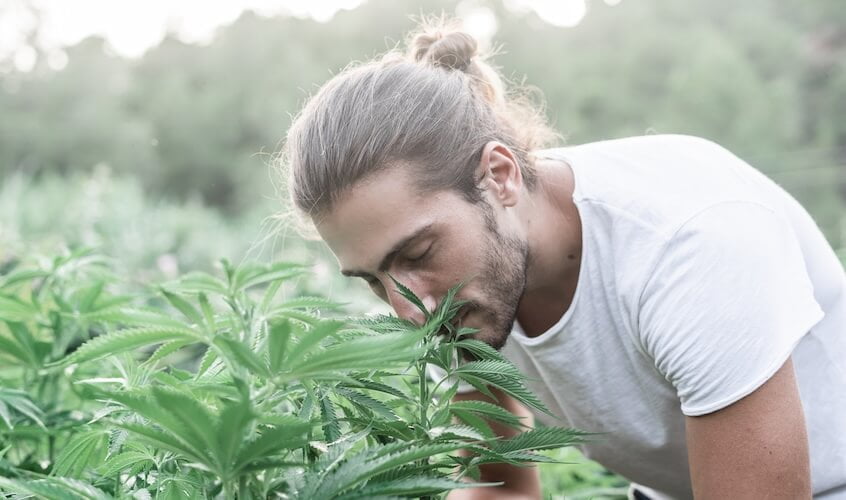





Leave a Comment